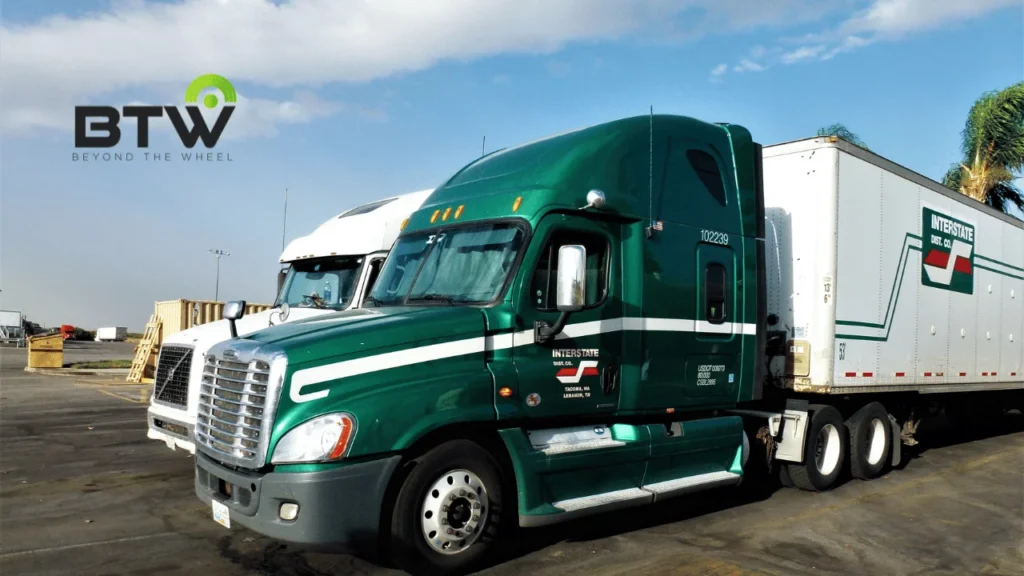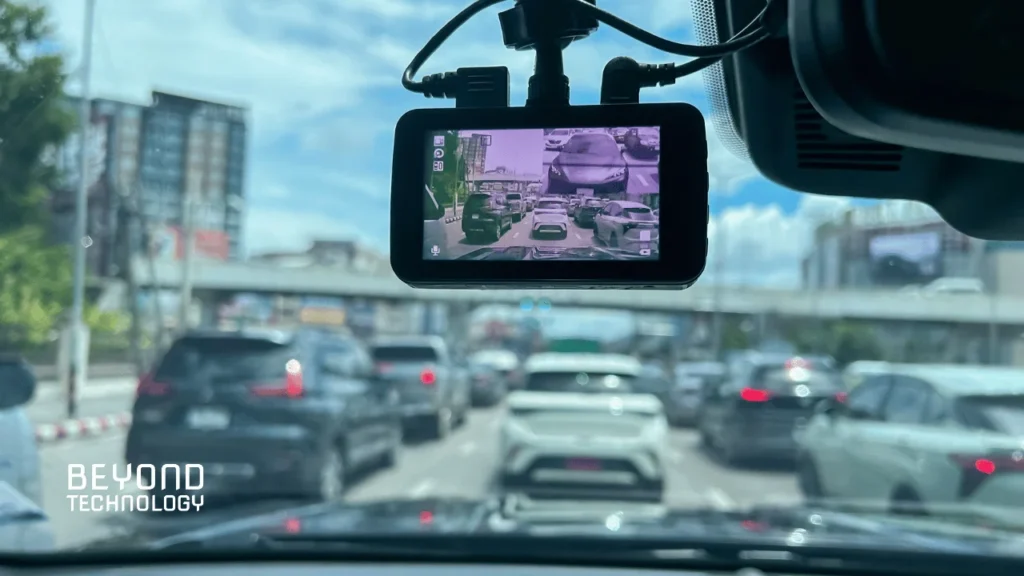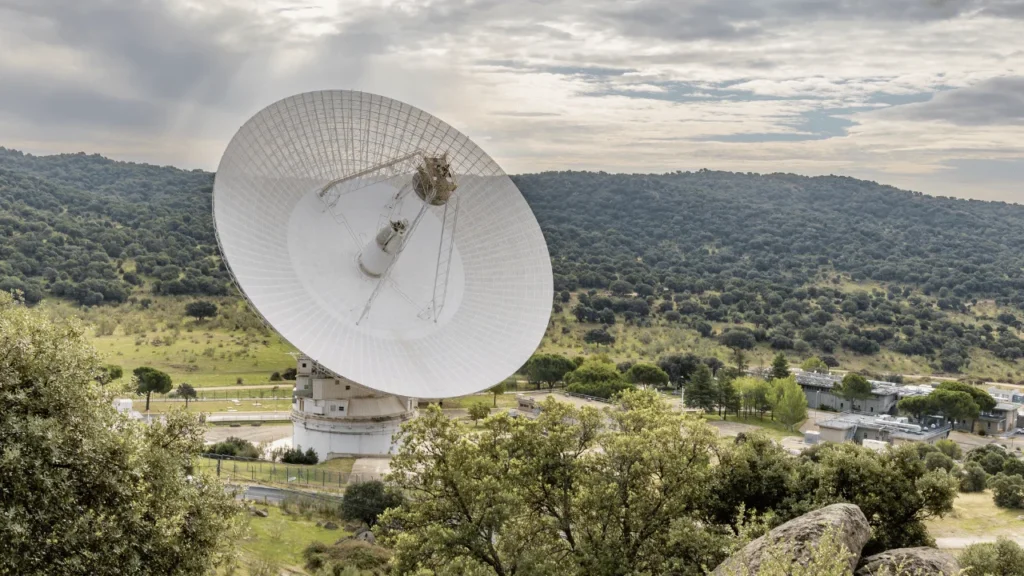What is fuel monitoring and why is it essential for fleets?

In fleet management, one of the most significant operational challenges is the efficient handling of fuel. This resource represents a considerable percentage of total costs, and without proper control, it can lead to financial losses that negatively affect profit margins. Fuel control is a technological solution designed to monitor consumption, levels, and potential irregularities in real time, providing companies with a clearer and more precise view of their operations. Real-time consumption monitoring to reduce waste Real-time monitoring, through Fuel level sensors of FLV helps identify consumption patterns and detect waste caused by poor driving practices, such as speeding or prolonged idling. Additionally, with visibility into vehicle-specific consumption, companies can make informed decisions to implement optimization strategies, whether by adjusting routes, training drivers, or evaluating fleet performance. Fraud prevention and leak detection One of the biggest risks in fuel management is theft or misuse of the resource. Advanced control solutions include precision sensors that alert about sudden drops in fuel levels. This not only protects company assets but also fosters operational transparency and strengthens trust within the team. Impact on operational efficiency and sustainability Beyond immediate savings, fuel control contributes to sustainability by reducing unnecessary consumption and, consequently, carbon emissions. A more efficient fleet not only lowers costs but also aligns with market demands for more environmentally responsible operations. Integrating these technologies enables companies to become more competitive and respond to customer demands with greater agility. Discover how to take your fleet’s efficiency to the next level At Beyond The Wheel, we offer advanced fuel monitoring solutions tailored to your needs. Speak with one of our advisors and transform the way you manage your operations.
Important fleet management issues and how GPS technology can help

Efficient fleet management faces numerous daily challenges. From resource optimization to asset security, companies seek tools to maintain control and enhance productivity. Among the most effective solutions, GPS tracking has emerged as a key technology to address these difficulties, transforming how vehicles are managed. Optimizing routes and reducing delivery times with technology tools Route planning represents one of the greatest challenges in fleet logistics. Unexpected traffic changes, adverse weather conditions, or planning errors can cause significant delays. This not only impacts delivery punctuality but also customer perception and operational costs. GPS tracking allows managers to monitor each vehicle’s location in real time and adjust routes as needed. With advanced mapping systems and predictive algorithms, it’s possible to identify faster and safer routes, avoiding congestion and optimizing every trip. This way, companies improve response times and achieve more efficient operations. Solutions for fuel monitoring and cost control Fuel consumption is one of the main operational expenses for any fleet. Without the right tools, identifying leaks, waste, or inefficient usage can be challenging, directly impacting profit margins. Thanks to telemetry systems integrated with GPS technology, managers can track consumption patterns in real time, identify irregularities, and make informed decisions to reduce costs. Additionally, this technology helps detect practices like speeding or prolonged engine idling, two factors that contribute to fuel waste. Enhancing vehicle security with advanced tracking systems The safety of vehicles and cargo is a top priority for companies managing large fleets. Vehicle or cargo theft can lead to considerable losses and disrupt operations. By implementing GPS solutions, organizations can continuously track each unit, making recovery easier in case of incidents. Some platforms even offer automatic alerts when a vehicle leaves a predefined perimeter, strengthening asset security and reducing risks associated with loss. Transform your fleet management with beyond the wheel Implementing GPS technology in fleet management not only addresses common issues but also unlocks new opportunities to maximize productivity and improve customer service. At Beyond The Wheel, we offer advanced solutions tailored to your company’s needs. Speak with one of our advisors and discover how we can help transform your operations.
Why tire monitoring is key to fleet safety and efficiency

Proper tire maintenance is essential for companies operating vehicle fleets. Although its importance is often underestimated, tires play a fundamental role in road safety and cost reduction. An efficient monitoring system can make the difference between smooth operations and costly issues. How proper tire maintenance prevents road accidents The condition of tires directly impacts vehicle stability and control, especially under adverse conditions. Factors such as improper pressure or excessive wear significantly increase the risk of incidents. In transport fleets, where heavy loads and long distances are routine, these risks multiply. Detecting issues early through monitoring systems ensures optimal conditions, protecting both drivers and company assets. Lowering operational costs with tire monitoring systems Efficient tire management not only enhances safety but also reduces operational expenses. Incorrect pressure can increase fuel consumption, while uneven wear leads to premature replacements. Advanced technological solutions, such as sensors, help identify problems before they escalate into major expenses, optimizing resources and maximizing each tire’s lifespan. Advanced technology for continuous tire monitoring The advancement of telematics allows fleet managers to access real-time data on pressure, temperature, and wear. These tools not only provide a detailed overview of tire conditions but also enable data-driven decision-making. This is essential to ensure each vehicle meets safety and efficiency standards, minimizing unexpected issues and improving overall productivity. Consult with an expert for customized solutions Maintaining fleet safety and efficiency requires reliable tools and specialized advice. Beyond The Wheel offers advanced monitoring solutions tailored to the specific needs of each business. Speak with one of our advisors and discover how to enhance your operations while reducing costs.
What Is a fatigue monitoring camera and why is it crucial for fleet safety?

Road safety is a critical concern for companies managing vehicle fleets. One of the leading causes of accidents is driver fatigue, a problem that is often difficult to detect in time. To address this challenge, fatigue monitoring cameras have emerged as an innovative and effective technological solution. These devices not only monitor the driver’s condition in real time but also serve as an alert system for potential risks. How a smart camera detects signs of driver fatigue Fatigue monitoring cameras are designed to analyze driver behavior using advanced algorithms. These devices track indicators such as blink frequency, gaze direction, and head movements. Additionally, some models are equipped with infrared sensors that function in low-light conditions, ensuring constant monitoring throughout the workday. When the system detects patterns that indicate extreme tiredness or distraction, it issues audible and visual alerts to help the driver refocus or take a break. These features not only prevent accidents but also contribute to the drivers’ well-being by encouraging safer and more responsible driving. Technology as an ally in accident prevention Integrating fatigue monitoring cameras into fleet management translates not only into enhanced safety but also operational benefits. Preventing accidents significantly reduces costs associated with repairs, insurance, and downtime. Moreover, adopting this technology enhances the perception of corporate responsibility, which is key to building trust with clients and business partners. Beyond immediate alerts, the data collected by these cameras can also be analyzed to optimize routes and improve drivers’ rest policies. In this way, companies achieve an effective balance between safety and operational efficiency. Why modern fleets must adopt this technology In today’s competitive transportation and logistics sector, ensuring operational safety is a strategic differentiator. Fatigue monitoring cameras are not a luxury but a necessity for any fleet that prioritizes road safety and driver protection. This technology reinforces a company’s commitment to higher standards of responsibility and on-road performance. Investing in advanced monitoring tools not only addresses immediate challenges but also positions businesses as leaders in innovation and safety within the sector. To learn how fatigue monitoring cameras can transform the safety of your fleet, speak with a Beyond The Wheel advisor. Get personalized guidance and discover solutions to elevate your business to the next level.
How advanced sensors are transforming fleet management safety

Fleet management faces constant challenges, especially in the realm of safety. Accidents, mechanical failures, and vehicle wear are latent risks that can lead to high operational costs and compromise personnel safety. In this context, advanced sensors have become key allies, providing solutions that not only enhance operations but also prevent incidents before they occur. Monitoring mechanical conditions to prevent critical failures The implementation of sensors in key vehicle systems enables the identification of anomalies in real time. For instance, tire pressure sensors detect dangerously low levels that could result in blowouts or skidding. Additionally, engine sensors continuously monitor parameters such as temperature, oil levels, and overall performance, alerting operators to potential issues before they cause significant damage. This proactive monitoring improves safety while optimizing maintenance costs by preventing expensive repairs. Fatigue detection technology for drivers Road safety heavily depends on the physical and mental condition of drivers. Fatigue detection sensors monitor operator behavior through driving patterns, steering movements, and continuous driving time. When signs of fatigue are identified, the system issues immediate alerts for the driver to take corrective actions, such as taking a break. This technology significantly reduces the risk of accidents caused by lapses in attention. Enhancing safety with real-time GPS tracking GPS tracking not only facilitates vehicle location but also plays a crucial role in fleet safety. With this technology, operators can monitor routes in real time, detect unauthorized deviations, and respond promptly to emergencies such as theft or accidents, even combining it with jammer detection systems. Additionally, trip data analysis helps identify risky driving patterns like speeding or hard braking, allowing for corrective measures that improve driver behavior and reduce road incidents. Advancements in sensor technology are creating a turning point in fleet management, delivering solutions that prioritize safety while optimizing operational performance. If you’re interested in implementing these tools for your fleet, Beyond The Wheel offers the solutions you need. Talk to an expert today and discover how to transform your operations.
What are jammers, and how do they affect fleet operations?

In the transportation and logistics sector, fleet security faces significant challenges due to the use of devices like jammers. These tools, designed to block communication signals, pose a direct threat to operational efficiency and asset protection. Understanding how they work, and the associated risks is essential to mitigating their impact. How signal jamming devices operate in fleets A jammer is a device that interferes with communication signals by emitting frequencies that disrupt data transmission between devices. In the transportation context, they are often used to neutralize GPS tracking systems and other monitoring technologies, leaving vehicles out of reach of central control. This not only prevents the location of a vehicle from being tracked but also disrupts communications related to security and logistics, directly affecting the ability to respond to incidents. Risks to logistics and transportation from jammer usage The proliferation of these devices presents severe risks to transport fleets. Criminals use jammers to facilitate cargo theft by disabling tracking systems. This not only results in significant financial losses but also potential contractual breaches and damage to a company’s reputation. Additionally, the lack of real-time information hampers operational decision-making, especially on critical routes or in high demand monitoring environments. Measures to protect transport fleets against interference Adopting advanced solutions can make a crucial difference in jammer protection. Telemetry and satellite tracking providers offer systems designed to detect interference attempts and activate emergency protocols. These solutions ensure fleet operations remain functional, prevent asset losses, and reinforce customer trust. Investing in cutting-edge technology is a necessary step for companies seeking to maintain operational integrity against these threats. Get personalized advice to protect your fleet If you want to learn more about mitigating the risks posed by jammers in transportation, Beyond the Wheel has experts ready to provide solutions tailored to your needs. Speak with an advisor today and strengthen your operations with state-of-the-art technology.
What is vehicle telemetry, and how does it change fleet management?

Vehicle telemetry has changed how companies manage their fleets, enabling more precise and efficient control of each unit. In simple words, it is a system that collects and transmits real-time data from vehicles to a monitoring center using technologies like GPS, specialized sensors, and communication networks. This constant flow of information allows fleet managers to make informed decisions to optimize performance, safety, and operational costs. How does telemetry work in fleet management? The core of telemetry lies in the devices installed in vehicles, which gather critical data such as location, speed, fuel consumption, and mechanical status. This information is transmitted through mobile or satellite networks to digital platforms where it is processed and presented in a visual and practical format. Thanks to this technology, managers can identify usage patterns, predict mechanical failures, and maintain continuous operational oversight. This continuous monitoring capability not only provides a complete overview of each vehicle’s condition but also enables the implementation of preventive measures to reduce downtime, optimize routes, and improve overall fleet performance. Key benefits of telemetry in fleet management Integrating telemetry systems into vehicle fleets offers numerous strategic advantages. One of the most significant is the potential to reduce operational costs. With precise data on fuel consumption and predictive maintenance, companies can avoid unnecessary expenses and extend the lifespan of their assets. Additionally, telemetry significantly enhances safety. By monitoring driving behaviors, such as hard braking or speeding, training programs can be implemented to reduce on-road risks. Finally, logistics optimization is another essential pillar, as it allows for the design of more efficient routes and minimizes delivery times. Why is telemetry essential for your business? Adopting telemetry solutions is not just a technological upgrade but a strategic investment for any company relying on vehicle fleets, such as logistics companies, courier services, and retailers. In a competitive environment, the ability to manage resources efficiently translates into a crucial advantage that directly impacts customer satisfaction and business profitability. If you’re interested in discovering how telemetry can transform your vehicle operations and strengthen your fleet control, explore the advanced solutions from Beyond The Wheel. Contact us today to take your resource management to the next level.
How GPS satellite tracking works for transport and logistics fleets
GPS satellite tracking has become an indispensable tool for transport and logistics companies looking to optimize operations and reduce costs. This monitoring system allows fleet owners and logistics managers to gain real-time visibility into their vehicles’ locations while managing resources more strategically to ensure routes and schedules are met. What is GPS satellite tracking and how does it help fleet management? The GPS satellite tracking system works through a network of satellites that send geolocation signals to devices installed in each vehicle. These devices capture the signals and transmit the information to a central system, where fleet managers can view real-time data on each unit’s location, speed, and direction. This level of monitoring not only allows for detailed control of operations but also facilitates informed decision-making, improving service punctuality and optimizing vehicle use. For companies in the transport and logistics sector, having this technology is a key competitive advantage, as it enables more efficient route planning and helps anticipate potential delays or detours. Moreover, satellite tracking provides valuable data that helps analyze usage patterns and plan maintenance for each unit, contributing to extending the fleet’s lifespan and reducing associated costs. Benefits of GPS satellite tracking for fleet safety One of the main benefits of GPS satellite tracking is improved fleet safety. Knowing the exact location of each vehicle allows managers to act quickly in case of incidents or emergencies, whether to assist the driver or recover a vehicle in case of theft. The system also enables monitoring of driver behavior, identifying driving habits that may pose risks or increase vehicle wear. Access to this real-time data helps protect company assets while building customer trust, as clients receive accurate updates on delivery status and estimated arrival times. This transparency and control enhance the company’s image and provide a higher quality service, particularly in the competitive transport and logistics sector. How GPS satellite tracking drives operational efficiency GPS tracking is an essential tool for optimizing operational efficiency. With real-time visibility over each unit, companies can plan more efficient routes and minimize downtime. This also helps reduce fuel consumption by avoiding congested routes and ensuring vehicles follow predefined paths, improving delivery times and customer satisfaction. Additionally, the data analysis provided by the GPS tracking system allows companies to identify usage patterns that improve overall operational performance. With this information, logistics directors can make well-informed decisions regarding fleet maintenance and rotation, enhancing productivity and lowering operational costs. GPS satellite tracking for fleets is a solution that brings visibility, safety, and efficiency to transport and logistics companies. To learn more about implementing this technology in your business and optimizing operations, contact Beyond The Wheel and discover how these solutions can make a difference in your fleet management.
Preventing theft in Mexico through security and protection in freight transportation

In Mexico, where the rate of theft is startlingly high, freight theft is a serious problem that impacts the entire supply chain. The sector saw 5,984 thefts between January and September 2024, with an average of 660 instances per month and around 22 thefts per day, according to the ALITHIA report and SESNSP statistics. To lower financial losses and improve fleet security in this situation, efficient fleet management along with telemetry, satellite tracking, and tire monitoring becomes crucial. States with greater economic losses and theft incidence Key cargo transit states like the State of Mexico, Puebla, and San Luis Potosí have the largest concentration of freight thefts in Mexico, with 82% of reported occurrences occurring in these regions. Companies in the industry suffer large losses because of this degree of occurrence, which are estimated to be $4 billion on average every year. Food, drinks, gadgets, and other high-value items are the most impacted, which further affects the financial viability of businesses and their insurers. Critical points and vulnerabilities in freight transportation Every link in the transportation network has risks, according to risk assessments. The largest danger places are unloading zones, unsafe parking lots, and areas close to the destination; 34% of the most common risks are related to in-transit theft and deceit. Mitigating these dangers requires putting in place a continuous monitoring system, which includes geofencing, and implementing safe behaviors, like avoiding needless stops in crucial regions. Technologies to prevent theft in freight transportation Technological solutions like GPS satellite tracking, sophisticated telemetry systems, jammer detection systems, and tire monitoring sensors are essential for businesses that manage car fleets to prevent theft occurrences and react to them promptly. These solutions effectively monitor vehicle conditions, detect unwanted tampering, and offer real-time vehicle tracking. Are You Looking to Increase the Security of Your Fleet? For additional information, get in touch with us, or assess the advantages of introducing these technologies into your business using our ROI calculator.
How to select a provider of telemetry

Transportation businesses now consider telemetry to be a vital tool, particularly for fleet managers. Telematics offers distinct competitive advantages since it can monitor the performance of trucks, trailers, and other vehicles in addition to important factors like tire conditions and the temperature in refrigerated containers. Selecting the appropriate telemetry supplier is essential to guaranteeing peak performance and safeguarding assets. What telemetry is and why it matters The practice of gathering and sending data remotely, or telemetry, enables real-time asset monitoring, including cars, machinery, and other machinery. It is essential for fleet management in the transportation sector to ensure safe and effective operation. Telematic systems give businesses complete control over vehicle performance, optimizing operations and lowering risks in response to the increased demand for real-time monitoring. Telemetry is used in the transportation and logistics industry to support data-driven decision-making. This technology makes it possible to keep an eye on the mechanical health, fuel efficiency, and behavior of vehicles. Furthermore, technology plays a critical role in industries that handle temperature-sensitive goods, such the transportation of perishable and refrigerated food, to guarantee that ideal conditions are maintained during the trip. Telemetry tool use has increased dramatically. Recent research indicates that over 60% of the nation’s fleets are using technology to streamline operations. The necessity to lower operational expenses and raise road safety is what’s responsible for this rise. Telemetry solution types available A variety of telemetry solutions are available from providers to suit various requirements. Depending on the business, there are several choices for anything from temperature management in refrigerated trailers to fleet monitoring of vehicles. The most sophisticated telemetry systems even enable interaction with fleet management programs, allowing for in-depth, real-time asset tracking. Considerations before selecting a telemetry provider It is crucial to consider several aspects while choosing a telemetry supplier. These include the system’s compatibility with existing tech solutions, the precision of the data collected, and the software and platform’s usability. It is imperative to consider the accessibility of the gathered data, since prompt and instantaneous access can have a substantial impact on decision-making. It is important to select a provider who offers bespoke innovations if your organization needs them, as this will depend on the size and operation of your fleet. Customer service and technical support Just as crucial as the telemetry solution’s quality is the after-sale support. When issues arise, a trustworthy supplier need to provide prompt resolutions and effective technical assistance. Assessing the quality of customer service can be critical because having a team of experts on hand around-the-clock guarantees that any problems are fixed quickly. Plan cost and flexibility The price of a telemetry solution might vary greatly based on the provider and features available. It is wise to seek out suppliers with flexible plans that let you customize the service to your business’s unique requirements without going over your budget. It’s crucial to consider whether the service provides frequent updates. Some extra advice on selecting a supplier It’s critical to take reputation, service quality, technical support, and plan flexibility into account when selecting a telematics provider. The solutions you choose should be able to integrate with other fleet management systems and be customized to your company’s unique requirements. In addition to maximizing vehicle performance, proper telemetry can lower expenses and increase safety. At Beyond the Wheel, we are ready to help you find the best telemetry solution for your fleet. Contact us and request a personalized proposal that fits your needs.